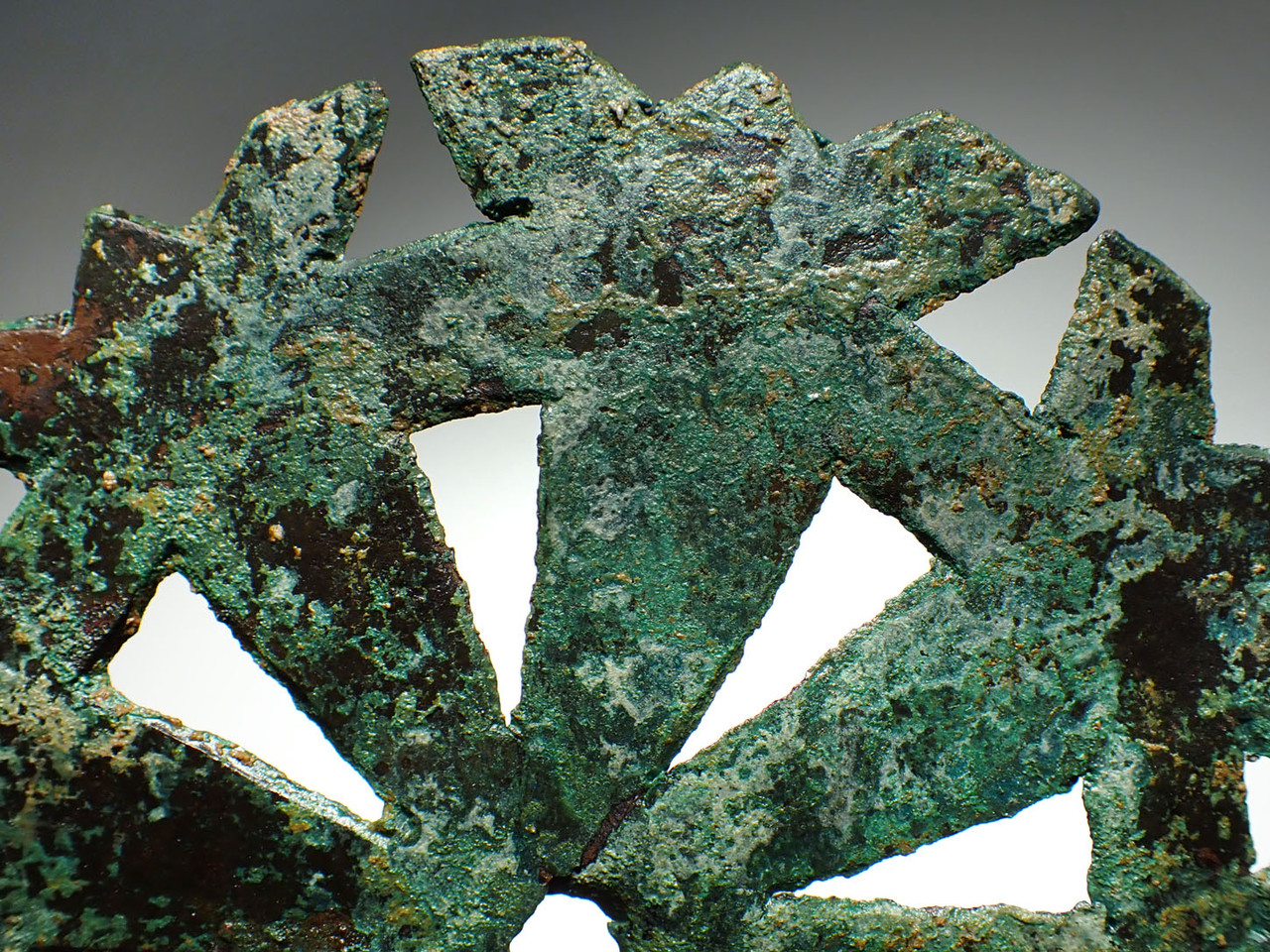Product Description
With spectacular geometry and workmanship, this large and EXTREMELY RARE ancient sheet copper bronze open work applique comes from the ancient Near East Indus River Valley Civilization. It is IMPOSSIBLE TO IMPROVE ON! An applique of this type could have been a major decoration on a chariot, article of clothing, light leather armor decoration such as on a vest, or used as a decoration on a horse of a high noble or warrior of prestige status. It was skillfully cut from copper sheet and features exceptional preservation, completeness, and ancient encrustations.
This artifact has been professionally cleaned and conserved in our lab, being treated with a special sealer developed and formulated by us specifically for ancient metal preservation. The patina shows beautiful traits only found in authentic ancient weapons such as a layered mineralized patina with encrustations. No active bronze disease. Bronze disease can be a problem in bronze artifacts and untreated, it can literally eat away an artifact over a matter of years and destroy the piece.
WARNING: There is an increasing number of fake "ancient" bronze weapons on the market. As fine quality intact, original specimens become more scarce and techniques have become more sophisticated to fake these weapons. We have personally handled numerous extremely well-done fakes with extremely convincing patinas. The degree to which the fakers have been able to replicate patina to disguise their work requires an expert examination by highly experienced individuals. It is common to find very reasonably priced weapons that are made up of part original and part modern components or wholly modern pieces displaying elaborate artificial patinas. All purchases should include from the dealer a written guarantee of authenticity with unconditional and lifetime return policies regarding such guarantee.
HISTORY
The Indus Valley Civilization, also known as the Indus Civilization, was a Bronze Age civilization in the northwestern regions of South Asia, lasting from 3300 BCE to 1300 BCE, and in its mature form 2600 BCE to 1900 BCE. Together with ancient Egypt and Mesopotamia, it was one of three early civilizations of the Near East and South Asia, and of the three, the most widespread, its sites spanning an area from much of modern day Pakistan, to some parts of northwestern India and northeast Afghanistan. The civilization flourished both in the alluvial plain of the Indus River, which flows through the length of Pakistan, and along a system of perennial monsoon-fed rivers that once coursed in the vicinity of the Ghaggar-Hakra, a seasonal river in northwest India and eastern Pakistan.
The cities of the ancient Indus were noted for their urban planning, baked brick houses, elaborate drainage systems, water supply systems, clusters of large non-residential buildings, and techniques of handicraft and metallurgy. A gradual drying of the region during the 3rd millennium BCE may have been the initial stimulus for its urbanization. Eventually it also reduced the water supply enough to cause the civilization's demise and to disperse its population to the east.
The Harappan language is not directly attested, and its affiliations are uncertain, as the Indus script has remained undeciphered. A relationship with the Dravidian or Elamo-Dravidian language family is favoured by a section of scholars. The cities of the ancient Indus had "social hierarchies, their writing system, their large planned cities and their long-distance trade.
Judging from the dispersal of Indus civilization artefacts, the trade networks economically integrated a huge area, including portions of Afghanistan, the coastal regions of Persia connected by the Gulf of Oman from the Arabian Sea, northern and western India, and Mesopotamia, leading to the development of Indus-Mesopotamia relations. Studies of tooth enamel from individuals buried at Harappa suggest that some residents had migrated to the city from beyond the Indus Valley. Ancient DNA studies of graves at Bronze Age sites at Gonur Depe, Turkmenistan, and Shahr-e Sukhteh, Iran, have identified 11 individuals of South Asian descent, who are presumed to be of mature Indus Valley origin.
 US DOLLAR
US DOLLAR
 EURO
EURO
 AUSTRALIAN DOLLAR
AUSTRALIAN DOLLAR
 CANADIAN DOLLAR
CANADIAN DOLLAR
 POUND STERLING
POUND STERLING














